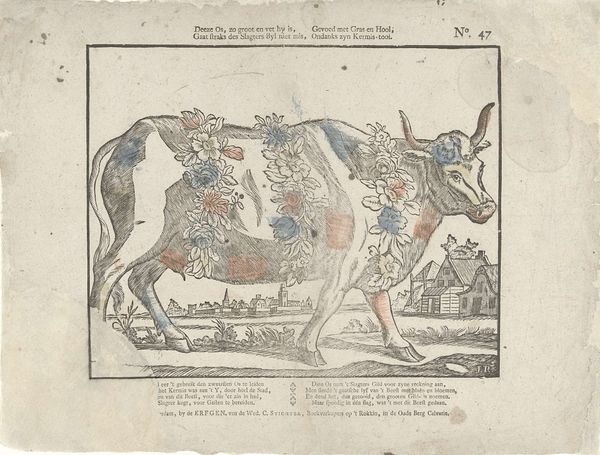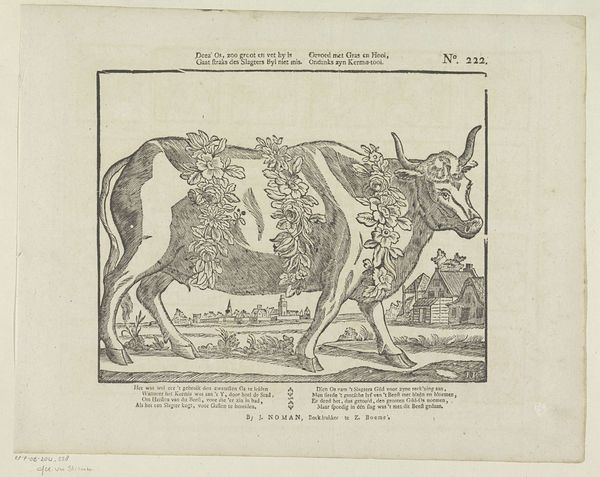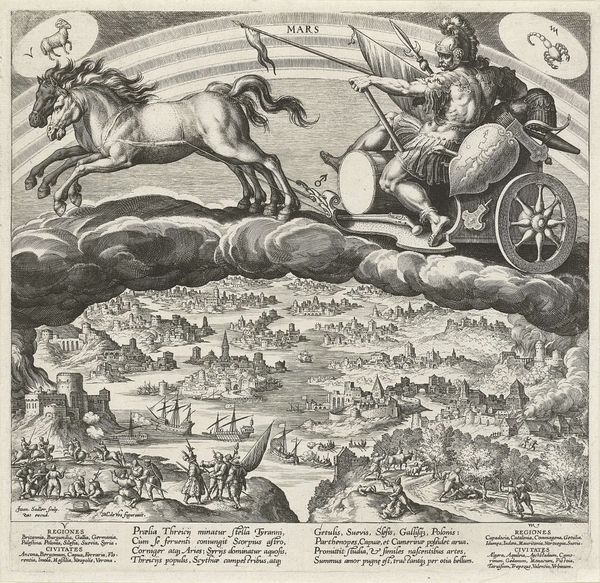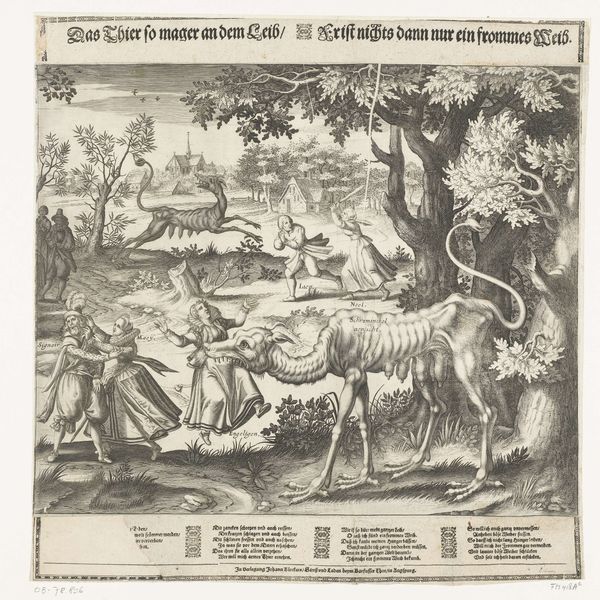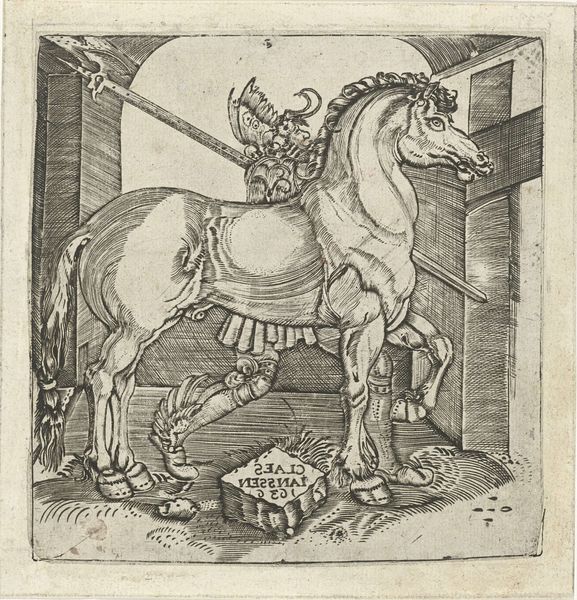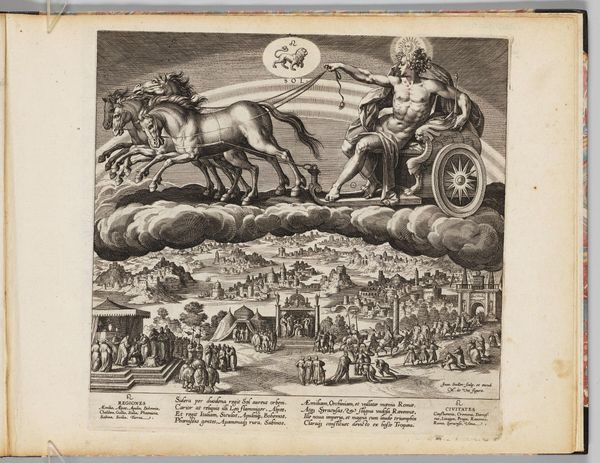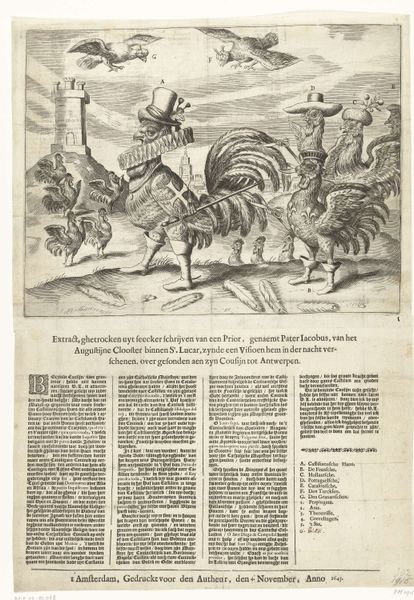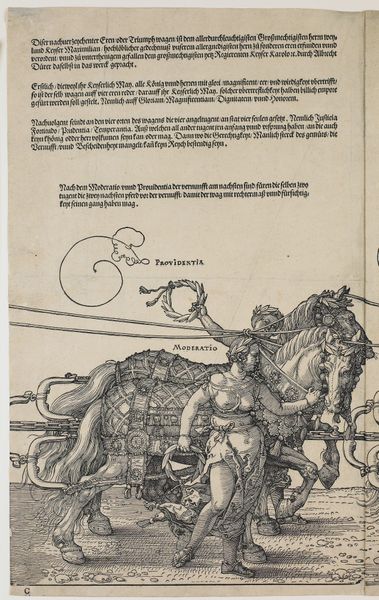
Deeze os, zo groot en vet hy is, / Gaat straks des slagters byl niet mis, / Gevoed met gras en hooi, / Ondanks zyn kermis-tooi 1715 - 1813
0:00
0:00
Dimensions: height 309 mm, width 391 mm
Copyright: Rijks Museum: Open Domain
This undated print by J. Robyn from the Rijksmuseum depicts a garlanded ox. These floral adornments, reminiscent of ancient sacrificial rituals, point to the ox's imminent slaughter. Consider the garlands themselves: In antiquity, adorning a sacrificial animal was a common practice across cultures, from the Greeks to the Romans, signifying offering and reverence. This imagery reminds us of similar scenes in ancient art, evoking a sense of solemn fate. The flowers, symbols of natural beauty and ephemerality, are juxtaposed with the robust animal, creating a visual tension. This tension highlights the transient nature of life and the inevitability of death. We are subconsciously reminded that even in times of celebration—like a fair, as the Dutch word ‘kermis’ suggests—death is always present, a shadow lurking beneath the surface. This deeply ingrained association engages our primal understanding of life's cyclical nature. The symbol of the garlanded animal endures, evolving through time, yet still carrying echoes of its ritualistic origins.
Comments
No comments
Be the first to comment and join the conversation on the ultimate creative platform.
